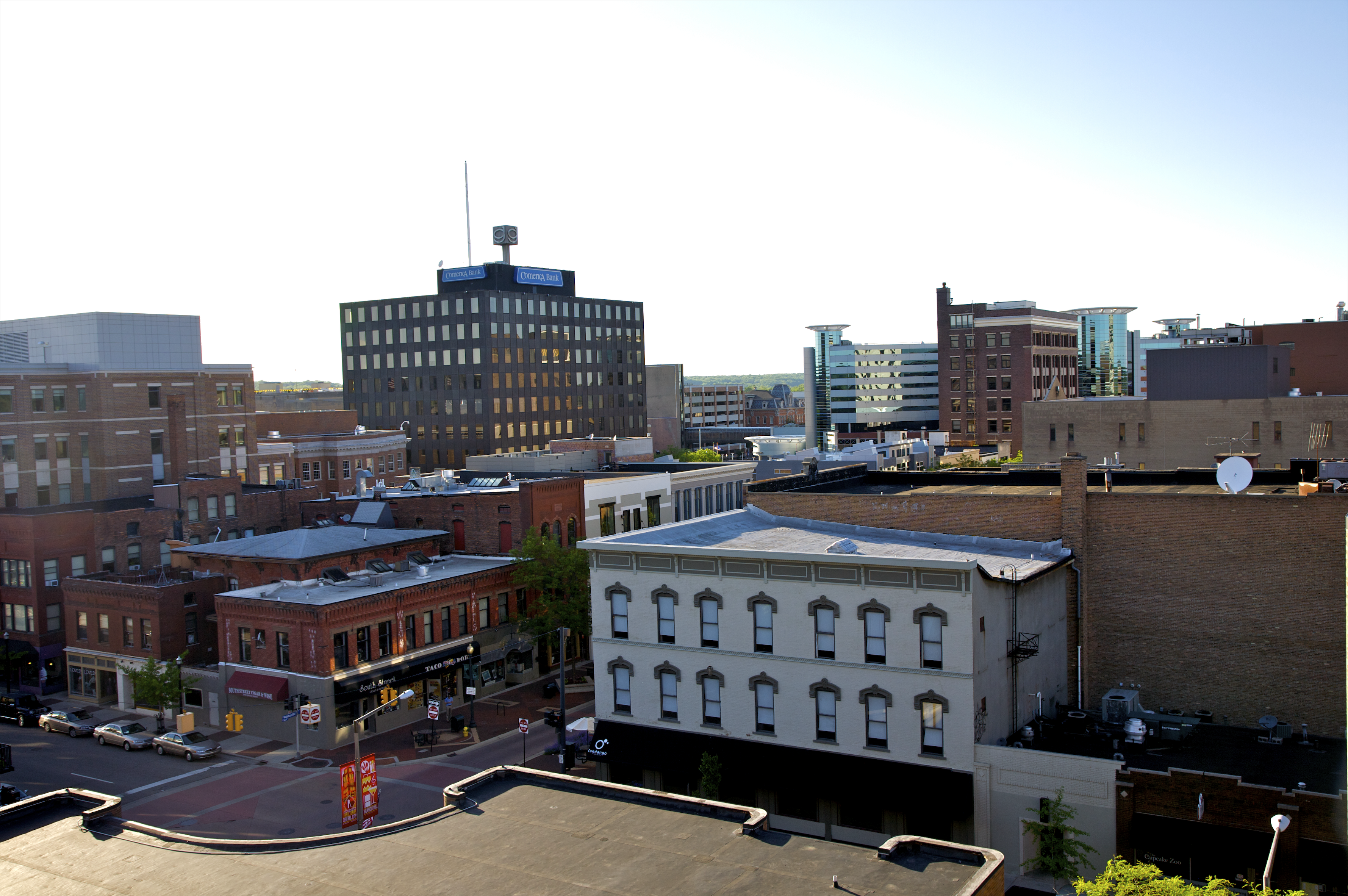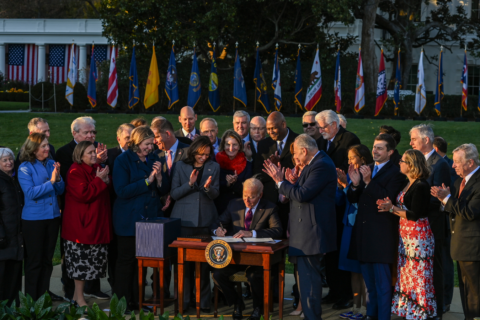As more than 1,100 cities, towns and villages pursue, win and deploy infrastructure grant funds from the Bipartisan Infrastructure Law (BIL), officially known as the Infrastructure Investment and Jobs Act (IIJA), they are not only focusing on the infrastructure benefits of the project but have also demonstrated how these infrastructure projects will strengthen their local economies.
Some of the BIL programs require applicants to submit a benefit-cost analysis (BCA). NLC has collected a handful of these BCAs to demonstrate how direct federal funds can go further in the hands of local recipients. While the benefit-cost analyses required can be a bit overwhelming and even costly for smaller municipalities, they demonstrate the determination and work that municipalities are willing to do to show the value of these federal investments in their communities and for their residents.
Kalamazoo, MI
The City of Kalamazoo, MI, a Justice40 Community1 serving approximately 73,000 residents, won a $12.3 million Reconnecting Communities Pilot grant in 2022 to rebuild and reconfigure the main downtown street from a major one-way street throughway to a two-way street that slows traffic and supports better pedestrian safety. Estimated construction cost was not included in the cost-benefit analysis but was estimated to be around $21.9 million, and the Reconnecting Communities grant will support nearly 50 percent of that cost ($12.3 million). The city expects to secure more than $28 million in benefits over the next 20 years. Some of the benefits, such as safety, is money that the City’s Traffic Engineer notes will go back into drivers’ bank accounts because they won’t have to pay for repairs on damaged cars from crashes or higher insurance premiums. The city anticipates the following breakdown of benefits from the project:
- Safety benefits: $22.1 million
- Transit user benefits: $900,000
- Cycling benefits: $2.8 million
- Residual benefits: $2.3 million
The city does anticipate a cost expected to come from lost commuter time travel estimated at $5.5million for a lost minute of travel time during the construction period since the driving time through the corridor will take longer. Finally, additional economic studies show that by improving the downtown street network Kalamazoo could bring in an additional $20 million in retail sales (not included in the overall benefit above) and more than 50,000 square feet of new or expanded building space.
Mansfield, OH
The City of Mansfield, OH, a Justice40 Community serving over 47,000 residents, won a Rebuilding America Infrastructure with Sustainability and Equity (RAISE) grant to help rebuild their downtown. This $7.3 million grant will turn the downtown corridor from a one-way to a two-way street. Along with street improvements, the project will also focus on pedestrian safety, replacing the sidewalks and making pedestrian crossings shorter. Additional work will replace underground utilities and install green infrastructure to reduce urban heat.
Mansfield expects the project to cost around $8.5 million in total and provide $35 million in benefits with only $1.2 million in cost to the city after the grant support. Because the three sections of roadway in downtown Mansfield have a higher crash rate than the state average, the project is expected to result in a benefit of just over $30 million from safety improvements. With the needed improvements downtown, they expect a large benefit from increased property values, around $3.7 million. The project will see $1.3 million from the state of good repairs as many of the materials used will last past the 20-year analysis period and will reduce long-term maintenance costs as the city is currently averaging six waterline breaks a year which are expensive to fix and disrupt traffic flow. To save additional costs and connect the project to Mansfield history, the city plans to use 60,000 bricks previously in the street in the proposed brick crosswalks.
Charlotte, NC
The City of Charlotte, NC, a Justice40 Community serving over 885,000 residents, also won a RAISE grant for their West Sugar Creek Mobility Corridor Project which is in one of the city’s “corridors of opportunity” and uplifts a low-income and underserved area. The $12 million dollar award funds the transportation infrastructure in the corridor, which is also seeing multiple investments in housing, business development and entrepreneurship, green infrastructure, and sustainability. The RAISE grant funds the engineering, right-of-way and construction of three mobility hubs with electric vehicle charging stations and allows for improved pedestrian mobility such as new crossings improvements, a multi-use path in the corridor and new sidewalks. The Charlotte’s cost benefit analysis measured benefits over a 20-year life cycle of approximately $250 billion including:
- Travel time benefit: $155,814,000
- Collision reduction benefit: $39,266,000
- Operation and maintenance benefit: $71,000
- Emissions benefit: $679,000
- Vehicle operating benefit: $11,401,000
- Pedestrian improvement benefit: $4,006,000
- Bicycle improvement benefit: $1,258,000
- Health improvement benefit: $32,127,000
- Transit amenity benefit: $2,210,000
Local governments across the nation are utilizing BIL funds not only to restore deteriorating infrastructure but also to bring economic gains, savings, and benefits to their communities. Some projects will show direct monetary increases to municipalities and community partners directly and quickly, but distributed savings of time and disruption are benefits that are going to and felt by businesses, property owners, residents and visitors using the infrastructure for years to come. Although it will likely be near a decade until the full measure of benefits of each BIL project will be fully measured and identified, the BCAs give an early look at how the return on investment of infrastructure unfolds. To see a searchable map of local government BIL award winners, visit NLC’s Rebuilding America Dashboard.
Resources:
- Ways Local Governments Can Make Their Federal Match
- 10 Ways to Make Your Local Match for Federal Projects
1 A Justice40 Community is defined by the Administration as a disadvantaged community that is marginalized, underserved, and overburdened by pollution. Justice40 indicators in this blog series are categorized by the municipalities’ census tracts being all Justice40 qualifying or the project being in or adjacent to a designated Justice40 census track.












